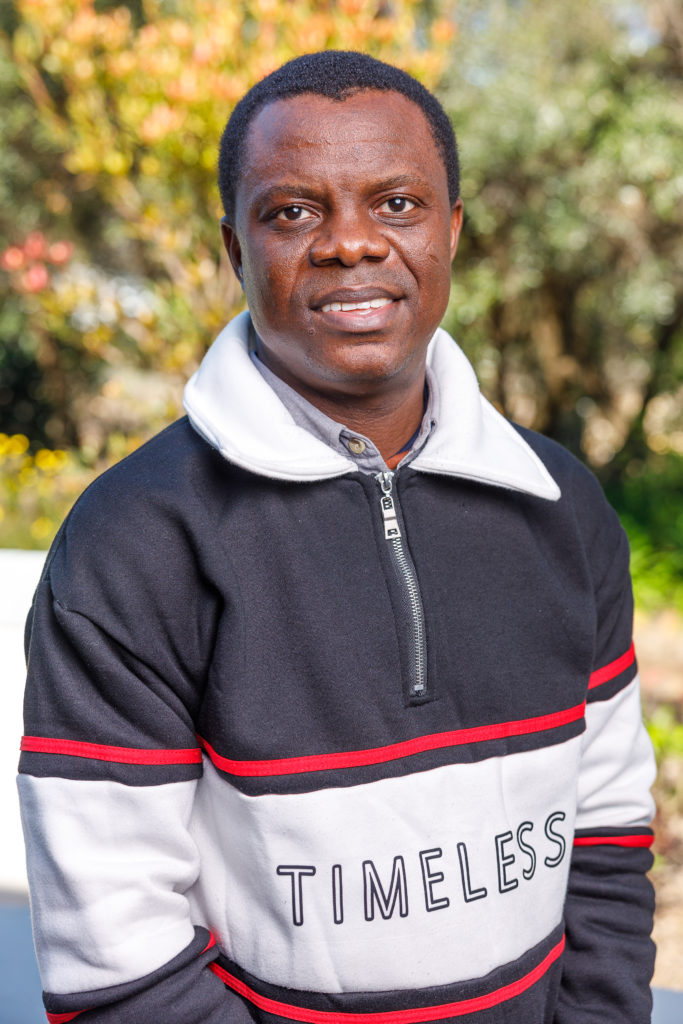Ishmael Takyi is a man on a mission – a mission to develop a mathematical model to study how matter interacts at sub-atomic level by modelling solitons.
“He is trying to solve a puzzle on the quantum level by developing a mathematical model that can predict how very tiny particles behave when they interact such as in a collision or when materials bounce off each other,” said Max Waltman in his introduction.

Solitons are waves with a single crest. They result when a wave’s natural tendency to spread as it propagates is cancelled out by a non-linear phenomenon known as self-focusing. This means such waves can travel long distances while maintaining their shape.
“Solitons are classical solutions of non-linear field theory,” explained Takyi. “They have a permanent form, and their energy density moves undistorted with a constant velocity. They were first discovered by engineer and shipbuilder John Scott Russell in 1834 while observing the motion of a boat on the Edinburgh-Glasgow canal. The wave that developed as a result of the boat’s quick stop maintained its shape as it travelled. He referred to these waves as the Great Waves of Translation.”
The single-pulse property is the key difference between normal and soliton waves and is thought to play a role in the development of tsunamis.
Takyi is part of the seventh cohort of Iso Lomso fellows currently in his first residence at STIAS. He is a mathematical physicist, employed as Lecturer in the Department of Mathematics at Kwame Nkrumah University of Science and Technology in Ghana. His academic path has included a PhD at the Institute of Theoretical Physics at the University of Stellenbosch. Along the way he was the recipient of the Stephen Hawking Scholarship for his studies at the African Institute for Mathematical Science in Cape Town and won the Vice-Chancellor’s Award for the best graduating student in mathematics at the University of Ghana. His research interest is theoretical particles and nuclear physics particularly in the areas of non-linear field theory, quantum field theory, baryons as solitons and quantum energies of solitons. His STIAS project will specifically look at Decay Widths of Baryon Resonance.
The hope is that one day his work could have practical application including in helping to mathematically explain exactly what happens when a disease interacts with a human cell.
For his seminar he explained the dynamics of solitons in non-linear field theory in one-space and one-time dimensions, specifically discussing the interaction of these solitons in the non-canonical φ^6 model which is only one of the available models currently being studied and was first studied in Japan in the 1970s.
“If you drop a coin into water, the ripples interact with each other, lose energy and die out,” he explained. “Soliton waves are different – as they interact they emerge from the interaction without losing their shape and size. They also don’t lose energy as their energies interact.”
“They are therefore of permanent form, localised within a region (with finite size and energy) and can interact with other solitons and emerge from the collision unchanged, except if there is a phase shift.”
Because of these unique properties, solitons and their modelling have wide application in physics (including cosmology and condensed matter physics – to steady ferromagnetic materials like iron and cobalt). They are also used to steady the properties of waveguides in optical fibre cables which guide how lightwaves travel in the fibres. In this regard Takyi highlighted the work of Ghanaian chemical engineer Thomas Mensah who contributed to the early development of fibre-optic manufacturing and nanotechnology, and who passed away earlier this year.
Solitons are also used in biophysics – to look at how DNA strands interact with drugs, how they recognise protein strands and how they transcribe.
“Also solitons are used in nuclear and particle physics which is what my research is based on,” added Takyi. “Looking at the interaction of protons and solitons, and the properties that emanate from this interaction.”
“One feature of the soliton in the non-canonical Φ^6 model is that they possess localised inner structures. The presence of these, coupled with the internal modes of the excitation spectrum of this soliton, results in the formation of resonance windows and oscillons for particular values of the model’s main parameters. Examination of the resonance mechanism can then allow you to quantify how the resonance window centres scale with the number of cyclic oscillations.”
The work thus far has studied the collisions of kinks in this model. Takyi and his colleagues have examined the energy density of the kink, and found that a localised inner structure of the energy density emerges.
“As the kink and antikink move towards each other and interact there are three possible outcomes – they will reflect each other/move away, destroy each other and lose all their energy to the environment, or they can form a bound state.”
Studying the model has found the presence of localised inner structures in the energy density of the kink for some values; explored the kink-antikink scattering solutions; and, looked at whether the presence of localised inner structures coupled with shape models result in the generation of oscillons and resonance structures. (See: https://www.researchgate.net/publication/366716578_Kink_collision_in_the_noncanonical_ph_6_model_A_model_with_localized_inner_structures)
Takyi is interested in applying similar concepts in the field of medicine trying to predict how disease spreads in the environment as well as the interactions between existing diseases and pandemics. He has recently published an article on the interactions between hypertension and COVID-19 vaccination. (See https://www.researchgate.net/publication/370770522_Hypertension_and_COVID-19_fractional_derivative_model_with_double_dose_vaccination_version_1_peer_review_awaiting_peer_review)
“We believe it might be possible to use such models to predict interactions between diseases and pandemics. But there has not been extensive work yet. Solitons are a non-linear concept, while disease spread is usually linear. I hope with time the ideas will evolve and more questions will be answered.”
Michelle Galloway: Part-time media officer at STIAS
Photograph: Ignus Dreyer
